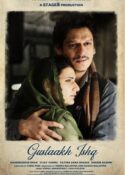New Years is certainly a time to rejoice, no matter what race, religion, or part of the world you are in. It’s a time to reminisce on a year gone by, smiling about the good times while vowing to improve and correct mistakes. New promises, new resolutions, a new day; New Years is a fresh start, and a time to celebrate. They say the best way to celebrate New Years is to follow the age old traditions and customs that are passed on generation after generation. In each corner of the world, New Years celebrations around the world are filled with joy and festivity. It marks the passing of another year and the anticipation of a new one. This is the ideal occasion in which people indulge themselves in guilty pleasures, except without having to feeling guilty!
There are many traditions of New Years that remain quite global, such as the creation of resolutions. Resolutions vary from adults who might want to quit smoking or lose weight; to children who wish to do better in school and behave well.
Loud noises and colourful displays of fireworks form another tradition. It is believed that these loud noises scare evil spirits away so that everyone can embrace the New Year with sanctity around them. They spread joviality and radiance, determined to make the night an unforgettable one.
Types of food eaten on New Years are another tradition that continues to live on. Similar to other traditions and customs, it is said that the consumption of foods in the shape of a ring bring good luck. Black eyed peas, cabbage, turnips and twelve grapes at midnight is also said to bring good luck.
One of the most common traditions of New Years is to visit places of worship, to thank the Man above for the good things gone by and to pray for success in the coming year. This tradition is getting increasingly popular as it not only gives a traditional touch to the event but also provides mental satisfaction and peace.
An English New Year
In England, crowds gather in Trafalgar Square and Piccadilly Circus in London as well as surround the chimes of the Big Ben as it announces a new beginning. Arms are linked and “Auld Lang Syne” is sung in unison.
The custom of First footing remains as important today as it brings good luck for the inhabitants of that house. The rule remains that the first footer must be young, in good health, and good looking. They must also have the presence of dark hair and hold a piece of coal, money, bread and salt, which are all symbols of wealth.
Children rise early to make rounds to neighbours singing songs. They would be presented with coins, mince pies, apples and other sweets for singing. This should be done before noon or else the singers will be known as fools.
Australian New Year
The Aussies start their New Years’ celebration on December 31. They make noises with whistles and rattles, car horns and church bells, to ring in the New Year in all its glamour and excitement.
Later on New Years Day, family and friends will spend the day outdoors taking part in activities such as rodeos, picnic races and surf carnivals.
Ringing in the New Year on a Different Date
Even though much of the globe celebrates New Years on the 1st of January there are a significant number of cultures and religions that celebrate New Years at a different time or on a different date.
For Hindus all over the globe New Years is celebrated during the “Festival of Lights” known as Diwali or Deepawali. Diwali is a religious festival that celebrates the return of Prince Ram, wife Sita and brother Laxman from fourteen years of exile. Diya (ghee lamps) are lit around the house and throughout temples. In cities, electrical lights are used to illuminate buildings. The significance of the great quantity of lights is to drive away all evil and replace it with goodness. Everyone makes sure to complete any unfinished work, businesses pay of off debts and start new accounts and new things are bought for homes while gifts and cards are exchanged.
Muslims celebrate the New Year according to their calendar which revolves around the cycles of the moon. On the first day of Muharram, the first month of the Islamic calendar, Muslims around the world rejoice and celebrate the New Year. The celebrations are held quietly as opposed to the usual noisy New Year celebrations. Special prayers are made and the appearance of the new moon is recorded in mosques. Mostly importantly on New Years, the story of the Flight of Medina is recited.
In Punjab, the New Year arrives on the 13th of April during the festival Baisakhi. The famous city of Amritsar holds fairs on this occasion. Women and children wear new clothes bought specifically for this special day, and men give each other new turbans as a sign of good wishes. The fair comprises of jugglers, musicians, and stalls of food. New Years also has a religious angle for Punjabi’s, like many other cultures.
Sri Lankans celebrate the New Year on the 13th and 14th of April because most follow the Hindu calendar. They clean their house, even paint houses, and prepare delicious sweets. Family and friends are visited and their first meal is pongal which is milk rice prepared by the chief or father relative.
There are many more cultures and religions that celebrate New Years in their own unique and traditional style, and this article only shed light on a few of these.
So from the BollySpice team, here’s wishing our readers all the best for your New Year celebrations and we hope and pray that the New Year brings happiness and joy to you and your loved ones.








